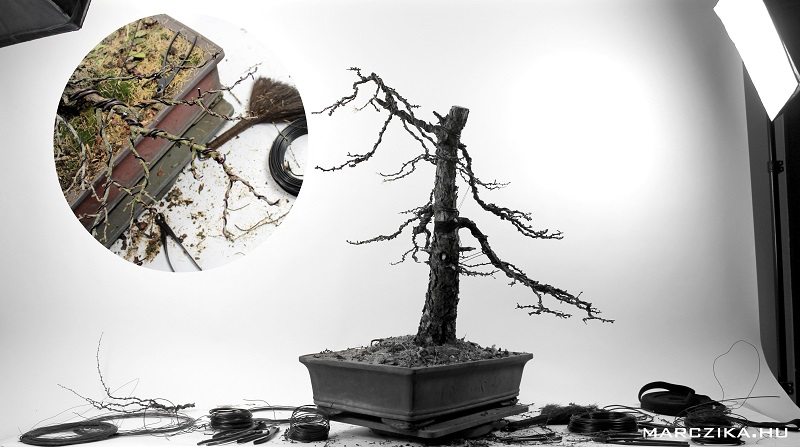First bonsai shaping of a Larix decidua from yamadori
What if yamadori is not too cool? If not as promising as we thought at the first look? Don't despair! A bonsai raw material almost always requires larger shapings before it gets its final shape. There is a need for this, of course, but at least good improvisation skills. All the more so because the harvested plants in most cases - as in the case of the plant in the post - tremble the yamadori hunters and, over time, it turns out that the idea of harvesting the plant is not always in the tree. Of course, the characteristics and the characteristics of the plant remain beauty and motivation, so you don't have to be discouraged at this time. Pre-bonsai tools and bonsai shaping can begin. But before we get into the ratatouille, let's see why we're dealing with a larch and what we like about it - to say what to think before and during shaping.
Why do we love Larix Decides?
Larch is generally favored by the bonsai enthusiasts because they can be raised relatively quickly from the shoots due to branches, branch levels and, thanks to their elasticity, can be easily woven. The soft foliage of green leaves delight the eye in the summer as a light canopy, and in autumn fall leaves with a nicely yellowish foliage. The bark of older individuals is not only because of its mild rustic but also because of its color. Tiny pine-cone are scaled with a bonsai, and although much more fertilizers is required by the plant, it is worth staying on the branches - if you like that look. Of course, besides the objective reasons, we can also mention completely subjective reasons, such as simply favoring the plant. Because like it. Because nice.
"The Larix bonsai in the snowy garden is like the winter kusamono in the tokonoma.
You don't have to talk much about it, look silently ... "
Before the tree was shaped, we saw the top of the tree so as not to fight with a tree too high. We cut it down at the point where the narrowing of the strain seemed to end. From this point on, the pre bonsai formation was almost entirely related to the remaining branches. In such a case, it is expected that after the first shaping the branches will be thin for the first time, but as they say, time is working for us. Larch is able to produce intense growth over a few years that will allow you to thicken the desired branches - but for the time being, we still have a little more to wiring. It is also true here that wiring is not "tightened" too tightly and we try to "roll" the anodized aluminum wire as closely as possible, so that it can counteract the tension evenly when bending the branches. Of course, before the wiring, we removed the unnecessary branches and unnecessary jins, and only then were the essential tools of the shaping (jin pliers, bonsai scissors, concave bonsai scissors, etc.).
It is important to note that in this case the branches we leave, the role of the first and second branches, will be filled and therefore we should not aim for a compact image in shaping, but the right directions are the guiding ones - the future of the tree will start from here. The uppermost branch, which will be the continuation of the tribe, is usually a difficult case, but never hopeless. If you have branched younger branches, then if you have a way to hold it and wire it, bend them so that they can really make a crown impression. The lower branches always leave the thicker ones, preferably with as many branches as possible. Nor is it a problem if we leave a little bit thinner on it, because it is always easier to get out later than to grow it. After the shaping, from the summer time it is worth keeping the thinest wired branches in the thinnest, because it can easily cut the wire in the middle of summer. If this were the case, it is worth removing the wire immediately and later rewiring the tree.


.JPG)

.JPG)
.JPG)
.JPG)
.JPG)





0 hozzászólás